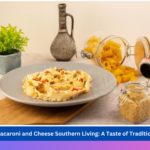Spaghetti con la Colatura di Alici is essentially a no-cook-sauce version of aglio e olio that has been amplified in umami by the inclusion of colatura. To taste and appreciate the savoury richness of colatura, it is best used as a finishing seasoning. When exposed to high heat, most of its complexity is gone.
For recipes that include fish sauce, a considerably more economical Southeast Asian kind is preferable than pricier colatura—the it’s equivalent of flavouring a pot of blanching water with Maldon sea salt. The only time the colatura is heated in this recipe is just before serving, when it is combined with cooked spaghetti and a little bit of pasta cooking water. This spaghetti doesn’t dilute the colatura’s flavour, allowing it to truly stand out.
I bring a couple quarts of water to a boil with very little seasoning before adding the spaghetti. Similar to pasta alla gricia, elements in the sauce will add a lot of saltiness to the dish; in this instance, colatura is the source of the saltiness. For six quarts of water, I prefer to add just two teaspoons of salt; but, if you are watching your sodium consumption, you can leave the water completely unseasoned. To make the pasta water extremely starchy, which will later assist bind the sauce together, use as little water as possible when cooking the spaghetti.
In a very big bowl, combine a few tablespoons of colatura, a minced garlic clove, and a generous dose of red pepper flakes while the pasta is cooking. whatever bowl is the largest. Seriously. Because the pasta and sauce are combined entirely at room temperature, a strong stirring and tossing motion is required to create a creamy, emulsified sauce.
Next I create what is essentially a colatura vinaigrette, by stirring extra-virgin olive oil into the colatura mixture.
I take a few tablespoons of pasta water out of the saucepan before the pasta is done cooking and whisk it into the colatura dressing to create an emulsion. Before adding the cooked spaghetti and additional pasta water, it is crucial to emulsify the colatura dressing.
When the pasta is perfectly al dente, add it to the bowl along with a cup of the starchy pasta water and a handful of the chopped parsley. Now toss the mixture together. As you vigorously toss the pasta, the pasta water and colatura combination should combine to create a creamy sauce that coats the spaghetti and gently pools around the noodles.
Add a few breadcrumbs that have been lightly browned in olive oil after that. The breadcrumbs accomplish two things: In addition to adding a little of texture and crunch to the dish, they also aid to strengthen the sauce’s emulsion and keep it from splitting.
Continue tossing to incorporate the breadcrumbs and, if required, add a splash or two more of the starchy water to prevent the pasta from becoming dry.
To finish the dish, I add some finely grated lemon zest to add brightness and acidity to the dish.

Ingredients
- ¼ cup panko breadcrumbs
- 5 tablespoons extra-virgin olive oil, divided
- 450g dried spaghetti
- 3 tablespoons colatura, plus extra as needed
- 1 garlic clove, finely minced
- ½ teaspoon red pepper flakes
- 1/4 cup chopped fresh parsley leaves
- 1 teaspoon finely grated lemon zest from 1 lemon
Directions
- Breadcrumbs and 1 tablespoon (15ml) olive oil should be combined in a small skillet, and they should be cooked over medium-low heat, turning regularly, for 5 to 7 minutes, until toasted and golden brown. Add a little salt to the breadcrumbs once they have been transferred to a bowl. Set aside.
- Bring 3 quarts of water and 1 teaspoon salt to a boil in a Dutch oven or medium pot over high heat. Cook the spaghetti in the water, stirring often during the first minute to avoid the pasta from sticking. Cook the pasta until it is al dente.
- Meanwhile, add colatura, garlic, and pepper flakes in a large mixing basin. To make an emulsion, slowly drizzle in 1/4 cup (60ml) olive oil, followed by 2 tablespoons (30ml) pasta water while whisking constantly.
- Transfer pasta to a mixing bowl with 1/2 cup (120ml) pasta water and parsley. To emulsify the sauce and coat the noodles, vigorously toss and swirl the spaghetti. Toss in the breadcrumbs to blend. Pasta should be thoroughly coated in a creamy, emulsified sauce. If it appears dry, add 1 tablespoon (15ml) of pasta water at a time until it achieves the appropriate consistency.
- Season with lemon zest and a last splash of colatura if desired. Serve immediately.










